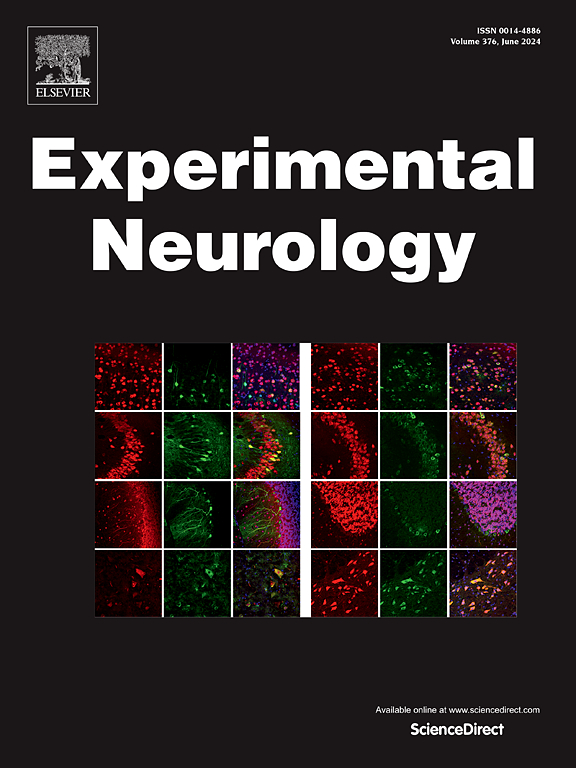Proportional recovery in mice with cortical stroke
IF 4.6
2区 医学
Q1 NEUROSCIENCES
引用次数: 0
Abstract
The proportional Recovery Rule (PRR) has been frequently used to predict recovery of lost motor function in acute stroke patients. However, it still needs to be explored whether the same concept applies to preclinical, i.e. animal models of stroke recovery. To address this question, we investigated behavioral data from 125 adult male C57Bl/6 J mice with photothrombotic strokes in the sensorimotor cortex. Lesion size and location were determined in the first week using in vivo T2-weighted MRI. Motor recovery was evaluated repeatedly over four weeks using the cylinder, grid walk, and rotating beam test. Recovery trajectories were analyzed using a newly formulated Mouse Recovery Rule (MRR), comparing it against the traditional PRR. Initial findings indicated variable recovery patterns, which were separated using a stepwise linear regression approach resulting in two clusters: 47 % PRR and 53 % MRR. No significant correlation was found between recovery patterns and lesion size or location, suggesting that other biological factors drive individual differences in recovery. Of note, in the MRR cluster, animals recovered to 90 % of their initial behavioral state within the first four weeks post-stroke, which is higher than the 70 % recovery usually reported in human PRR studies. This study demonstrates the complexity of translating the PRR to stroke recovery models in mice and underscores the need for species-specific recovery models. Our findings have implications for designing and interpreting therapeutic strategies for stroke recovery in preclinical settings, with the potential to improve the predictive accuracy of stroke recovery assessments.
求助全文
约1分钟内获得全文
求助全文
来源期刊

Experimental Neurology
医学-神经科学
CiteScore
10.10
自引率
3.80%
发文量
258
审稿时长
42 days
期刊介绍:
Experimental Neurology, a Journal of Neuroscience Research, publishes original research in neuroscience with a particular emphasis on novel findings in neural development, regeneration, plasticity and transplantation. The journal has focused on research concerning basic mechanisms underlying neurological disorders.
 求助内容:
求助内容: 应助结果提醒方式:
应助结果提醒方式:


